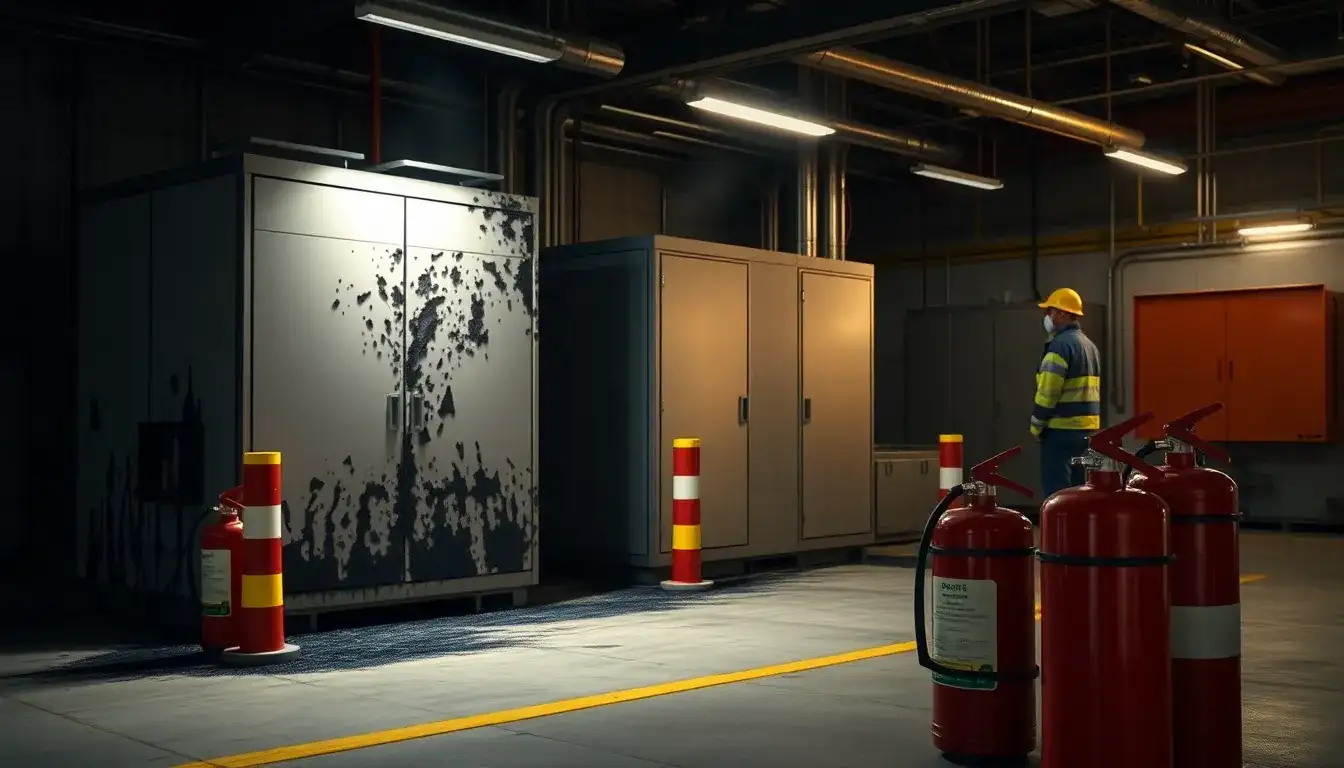What a Major Battery Fire Means for the Future of Energy Storage
A recent fire at the Moss Landing Power Plant in California, which houses the world’s largest collection of grid batteries, has raised significant concerns about battery safety. Although the flames were extinguished within a few days, the aftermath continues to provoke discussion and worry among local residents and environmentalists.
The Incident
On January 16, a fire was reported at Moss Landing, beginning small but quickly escalating to engulf a substantial portion of the plant’s batteries. Over 1,000 residents were evacuated, nearby roads were closed, and an emergency alert advised those in the vicinity to stay indoors. The fire affected the oldest battery array at the plant, a 300-megawatt system that became operational in 2020. With additional installations, the total capacity at Moss Landing now stands at approximately 750 megawatts, enough to power the grid like a standard coal-fired power plant for a few hours.
Vistra Energy, the site’s owner, reported that most of the batteries in the affected building burned; however, an exact count remains elusive as crews have yet to enter the site for inspection. This event marks a significant escalation compared to earlier incidents at Moss Landing, which have occurred since its opening.
Environmental Concerns
Local residents have expressed anxiety about potential health impacts linked to the fire. The U.S. Environmental Protection Agency monitored air quality for hydrogen fluoride—a toxic gas often released in lithium-ion battery fires—and found levels within California’s safety standards. However, initial tests revealed elevated concentrations of various metals, including cobalt, nickel, copper, and manganese, in the soil near the plant. Similar metals were detected in local drinking water, though still at safe levels.
In response to these findings, a group of residents has filed a lawsuit against Vistra and other defendants, alleging failure to implement adequate safety measures despite previous incidents. Notably, Erin Brockovich, known for her activism regarding environmental issues, is part of the legal team, emphasizing the need to recognize that even technologies designed to combat climate change can pose risks.
The Broader Impact
The fire at Moss Landing has drawn comparisons to the Three Mile Island incident, a pivotal moment in the nuclear industry that led to a decline in public support for nuclear energy. As the number of electric vehicles and large-scale battery installations increases, the frequency of such incidents is becoming more prominent. Other notable incidents include truck fires in Los Angeles and e-bike battery fires in New York City.
Dustin Mulvaney, a professor at San Jose State University, underscores the complexity of battery energy storage systems, which inherently come with numerous potential failure points. However, advancements in battery technology since the establishment of the Moss Landing facility have improved safety protocols. Newer storage facilities often utilize different, safer chemistries and better isolation techniques to prevent small fires from escalating.
Looking Ahead
As investigations into the Moss Landing fire continue, it is critical to learn from these outcomes, particularly as the global landscape for energy storage is rapidly evolving. As of 2023, there are roughly 54 gigawatts of utility-scale batteries deployed worldwide. If countries adhere to their renewable energy commitments, this number could surge tenfold by the end of the decade.
Energy storage is essential for transforming our power grid and achieving climate goals. However, it is crucial that safety measures evolve alongside technological advancements to protect both the environment and local communities.
Original article by NenPower, If reposted, please credit the source: https://nenpower.com/blog/implications-of-the-moss-landing-battery-fire-for-energy-storage-safety-and-future/



